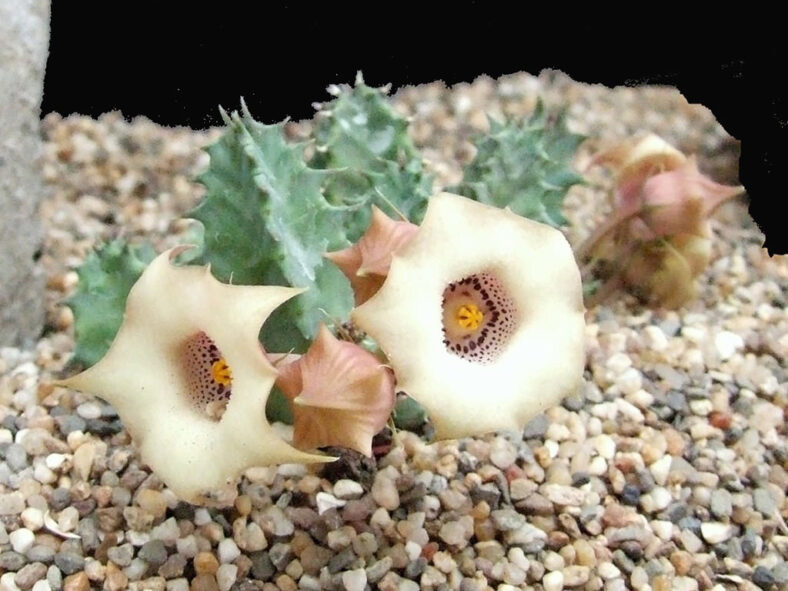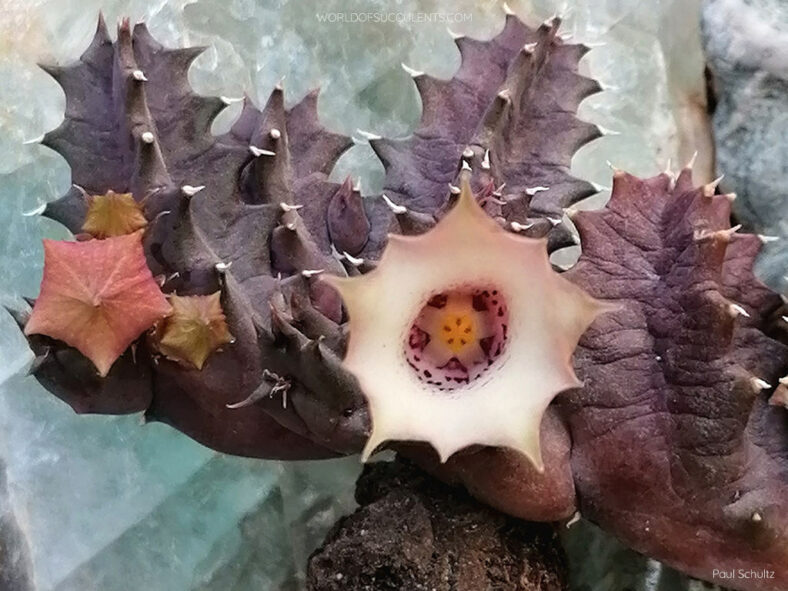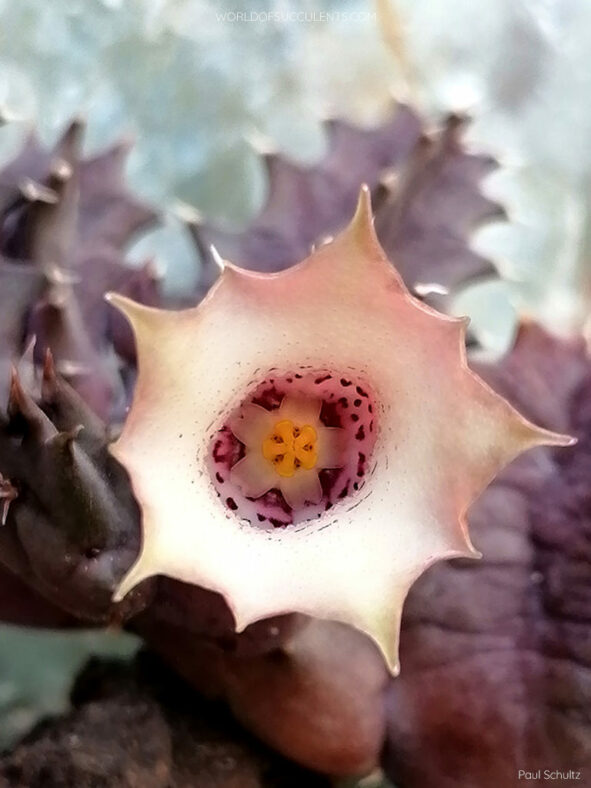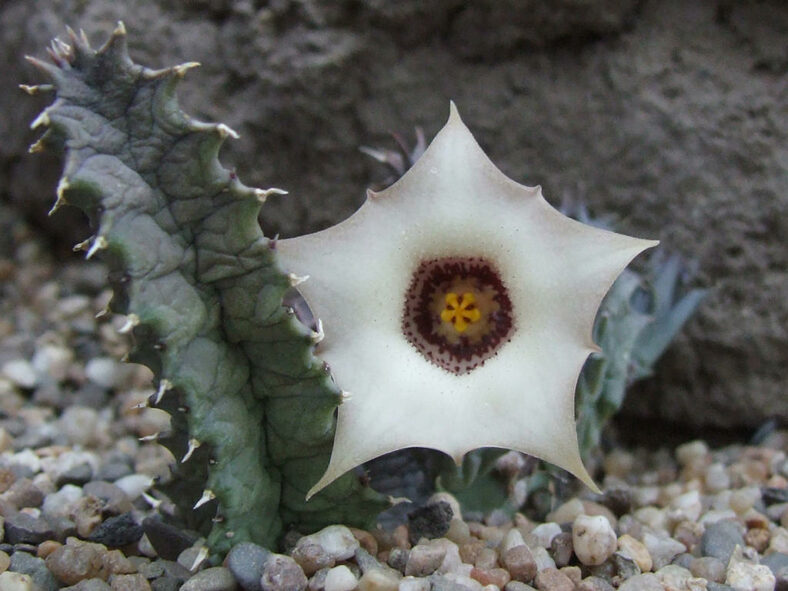Huernia blyderiverensis was discovered in about 1975 by Alan Percy-Lancaster (1944-1995) by Ohrigstad River near the junction with Blyde River.
Scientific Name
Huernia blyderiverensis (L.C.Leach) Bruyns
Synonym(s)
Ceropegia blyderiverensis, Huernia quinta var. blyderiverensis
Scientific Classification
Family: Apocynaceae
Subfamily: Asclepiadoideae
Tribe: Stapeliae
Genus: Huernia
Etymology
The specific epithet "blyderiverensis (pronounced bly-der-ee-ver-EN-sis)" refers to Blyde River Canyon, the type locality of this species.
Origin
Huernia blyderiverensis is native to South Africa. It can be found from Kromellenboog, among the hills along the southern banks of the Olifants River, to the slopes of the mountains that overlook the Blyde River. This species is restricted to dolomite and typically grows in shallow soils on ledges and rock outcrops.
Description
Huernia blyderiverensis, formerly known as Huernia quinta var. blyderiverensis, is a dwarf succulent that forms a dense clump of grey-green to purplish stems with deltoid tubercles. The stems are erect to decumbent and can grow up to 2.4 inches (6 cm) long and 0.8 inches (2 cm) thick. The tubercles are joined into usually four wing-like angles along the stem and taper into a soft point, soon wearing away. They can measure up to 0.25 inches (0.6 cm) long.
During the fall, inflorescences of 3 to 20 flowers arise from a short stalk, usually near the base of the stem. The flowers are bell-shaped or wheel-shaped with a cup-shaped tube in the center and can reach up to 1.4 inches (3.5 cm) in diameter. The corolla is white with purple-red markings usually restricted to the tube or sometimes on the lobes and around the mouth of the tube. The corona can reach about 0.2 inches (0.5 cm) in diameter. Its outer lobes are pale yellow, suffused with pink and maroon patches near the base, while the inner lobes are bright yellow.

How to Grow and Care for Huernia blyderiverensis
Light: Huernia blyderiverensis prefers bright light or partial shade during the hottest summer days. Too much sun can cause the stems to develop protective pigmentation or get sunburned, while too little light leads to weak, thin stems and decreased flower production. When grown indoors, place the plant near the brightest window of your home.
Soil: The right soil is crucial to successful growing. Use a commercial potting soil mix for succulents, or prepare your own with 50 to 70 % mineral grit, such as coarse sand, pumice, or perlite.
Temperature: Huernia blyderiverensis thrives in warm outdoor environments with low to moderate humidity but does not like winter cold and should remain fairly dry and warm during its winter dormancy. It grows best in USDA Plant Hardiness Zones 11a to 11b, with average minimum winter temperatures ranging from 40 to 50 °F (4.4 to 10 °C).
Watering: This plant has typical watering needs for a succulent. During the growing season, water it thoroughly and allow the soil to dry between waterings. It goes dormant in winter and needs almost no water, about once a month.
Fertilizing: To keep it healthy and thriving, fertilizing during the growing season is a good idea. Feed with water-soluble fertilizer diluted to half the recommended strength.
Repotting: The plant will benefit from fresh potting soil every two or three years. Repot it in spring, just before the growing season begins. Choose a container with drainage holes.
Propagation: The best way to propagate Huernia blyderiverensis is by stem cuttings. Take cuttings during the growing season to ensure good rooting. It is also easy to start from seeds in spring.
Learn more at How to Grow and Care for Huernia.
Toxicity of Huernia blyderiverensis
Huernia blyderiverensis has no toxic effects reported, so it is safe around pets and humans.
Links
- Back to genus Huernia
- Succupedia: Browse succulents by Scientific Name, Common Name, Genus, Family, USDA Hardiness Zone, Origin, or cacti by Genus
Photo Gallery
Click on a photo to see a larger version.


